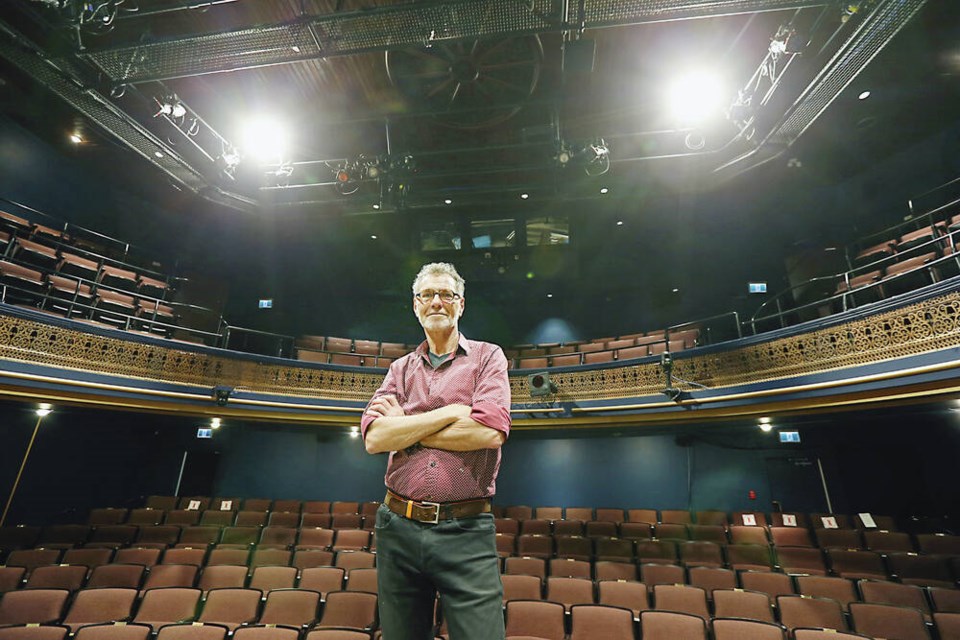The Belfry Theatre is offering an arts leadership training program to help Indigenous, Black and people of colour communities take on leadership roles in arts organizations.
This is the second year for the program, which is funded in part by the Victoria Foundation. Last year, the cohort was a team of 10, with eight Victoria-based organizations and two from Regina.
The program was created as a response to needs expressed by IBPoC artists and arts administrators.
“The program came about with the recognition that the arts community is predominately white — from the leadership, stage and back-stage,” said Michael Shamata, artistic director of the Belfry Theatre.
“There is a growing awareness that while our doors have always been open, they have not been open wide to Indigenous, Black and people of colour communities. This is a way of addressing the inequity.”
Arts organizations and educational institutions across the country have taken strides to be more inclusive, creating a demand for training on the part of members of the IBPoC communities to ready them for leadership roles.
“Nationally, even Indigenous theatre companies have a hard time finding an Indigenous stage manager,” Shamata said.
The leadership training program is made up of 12 weeks of Zoom meetings followed by a three-month internship at a professional arts organization of the participant’s choice. The Zoom seminars are led almost exclusively by IBPoC arts leaders.
Learning from last year’s program, this year’s session speaks directly to students’ needs, with topics discussed chosen by the students themselves.
The 13 participants in this year’s program hail from Victoria, 91原创, Saskatoon and Winnipeg. Their average age is 30.
The program is a collaboration between the Belfry Theatre, 91原创 College of Performing Arts, Electric Company Theatre, Globe Theatre, Green Thumb Theatre, Neworld Theatre, 91原创 Opera Victoria, Persephone Theatre, Prairie Theatre Exchange, University of Regina Centre for Socially Engaged Theatre,University of Victoria Faculty of Fine Arts and Victoria Symphony.
Taiwo Afolabi, Canada Research Chair in socially engaged theatre at the University of Regina and co-coordinator of the project, said: “As an IBPoC artist, I find this collaboration genuine and meaningful. The senior management of these organizations have come to the table to ask difficult questions about the current state of the art. They are hoping to develop a path towards an arts and culture sector that is deliberately inclusive.”
This summer, the Belfry Theatre was the venue for Bury the Hatchet, a theatrical performance and transformative art show for several short works created and performed by community and professional Indigenous artists.
The Culture Den, a production team led by a matriarchal council committed to guiding and supporting Indigenous-led artistic work, hosted the event.
The performance started in the courtyard outside the theatre, with cast members in symbolic canoes performing “coming ashore” protocols and asking elders for permission to enter. Once invited, representatives from the Songhees First Nation welcomed guests inside the building for the rest of the performance.
“It was a significant and really exciting entrance,” said Isaac Thomas, the Belfry’s new executive director. “The work made a powerful statement of how we can create a space rooted in Indigenous artistic expressions.”
The performance was based on the land and culture of various First Nations, giving them the opportunity to tell their stories in their own voices.
In Bury the Hatchet, the central theme was peace. Artists used their own cultural histories as inspiration for the performed works — a mixture of traditional and contemporary dance, visuals, music and storytelling.
The work conveys Indigenous concepts of peacebuilding, reflecting traditional, pre-contact political and social structure. It shows how nation-to-nation relationships can maintain harmony, balance and peace.
It was the fourth Indigenous showcase hosted by the Belfry and represented five to six months of work by a cast and crew of 30, which included a one-week residency at the theatre.
The program was funded in part by the Victoria Foundation.



